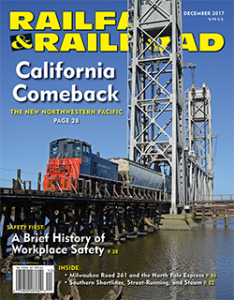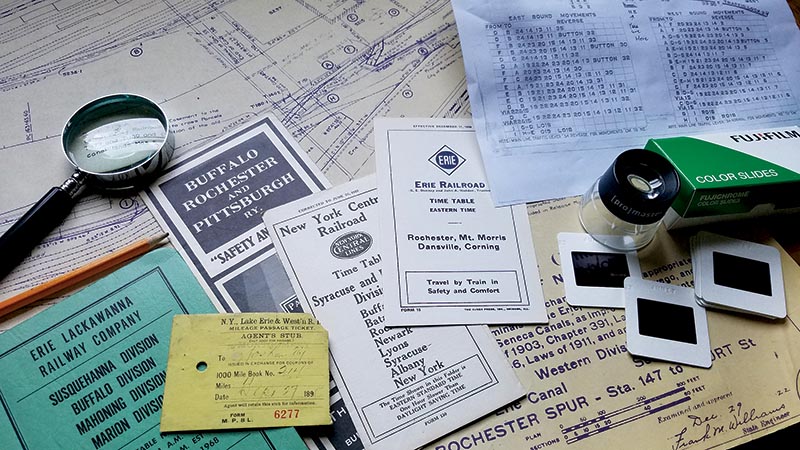 There are many hobbies and leisure time pursuits that are limited by seasonal changes. Most sports are tied closely to climactic conditions — few play baseball in the snow, for example. “Indoor” hobbies like model railroading tend to wane as soon as the days grow longer and the weather gets sunnier. Railfanning, however, is different. Like few other pursuits, it changes, rather than fades, with the seasons. Once rain and sleet begin to fall, most trainwatchers pack up their lawn chairs, most photographers put their cameras into waterproof bags, and most train riders bundle up — and almost all of them head inside.
There are many hobbies and leisure time pursuits that are limited by seasonal changes. Most sports are tied closely to climactic conditions — few play baseball in the snow, for example. “Indoor” hobbies like model railroading tend to wane as soon as the days grow longer and the weather gets sunnier. Railfanning, however, is different. Like few other pursuits, it changes, rather than fades, with the seasons. Once rain and sleet begin to fall, most trainwatchers pack up their lawn chairs, most photographers put their cameras into waterproof bags, and most train riders bundle up — and almost all of them head inside.
Yet, there is far more to being a railfan than being outdoors watching, photographing, or riding a train. There are many indoor aspects to the hobby, starting first and foremost with maps. Other than hiking, orienteering, and perhaps mountain climbing, I know of few pursuits that are more obsessed with cartography. As a child of the late 20th century, I spent long hours of my youth poring over DeLorme atlases, familiarizing myself with the railroad geography of the U.S. Each volume offered the opportunity to follow active and abandoned lines, and each turn of the page was a new adventure. Later came satellite orthography and, still later, digital mapping tools offered by Google and Bing. If you can’t actually be out there, you can still trace the railway with your finger or a pencil or the cursor of your mouse, exploring and beginning to understand new territories.

Winter can be a valuable time to catch up on researching your favorite lines. Otto M. Vondrak photo
I’ve written before about collecting ephemera, employee timetables, and books, but the pleasures of such collections go beyond their assembly. Ultimately, it’s the content that matters most, for each of these offers interesting ways of knowing the railway as a place. For those who are more oriented to the outdoor sides of the hobby, these collections can provide new and deeper knowledge of the landscape, information that may prove valuable in the summer months. Why was such-and-such line built here and not there? Where was the old mill? How exactly does the line ascend out of the valley, and what is the best way to get to that interesting bridge? What will the sun angles be like in three months?
Yet, this sort of research is about more than planning — it is also about understanding different times. The paper mediums of the hobby offer the opportunity to get to know railways as they were in other times, or even to know lines that no longer exist. Consider the large fan base dedicated to lines like the New York, Ontario & Western, gone for 60 years now, or the Central Pacific, which largely disappeared as a visible entity in the 1880s. We know these companies only through surviving timetables, photographs, and text. They are, in some ways, “indoor railways” now, best explored from a comfortable armchair.
If winter, now upon us, is a good time to research and read about the railways, it’s also a great time to write about them. I’m at my most productive when the sunsets are early, and the nights are still. So consider taking up your pen or your keyboard — that’s part of this hobby, too. After all, if it wasn’t for your efforts during railfanning’s “off season,” where would we find the stories to fill this magazine with each month?
—Consulting Editor Alexander Benjamin Craghead is a transportation historian, photographer, artist, and author.



